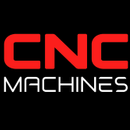Understanding the Key Differences Between Milling Machines and Machining Centers

The Difference Between Milling Machines and Machining Centers: History, Evolution, Usage, and Advancements
Milling Machines
Milling machines are key tools in precision manufacturing, used primarily for cutting and shaping materials like metals. They can be configured as either vertical or horizontal, depending on the spindle orientation.
History and Evolution
The first milling machine was invented by Eli Whitney in 1818, marking a significant advancement in manufacturing technology. Over the years, these machines evolved from manual operations to incorporate CNC technology in the 1970s, enhancing precision and efficiency.
Primary Usage
Milling machines are versatile, handling tasks such as face milling, end milling, and slotting, primarily in industries like automotive and aerospace.
Technology Advancements
The integration of CNC has revolutionized milling, making it possible to automate operations, thereby improving efficiency and accuracy. Modern systems include advanced digital controls and CAD interfaces.
Limitations of Milling Machines
Manual milling machines can be labor-intensive and less precise, and they are somewhat limited when it comes to complex shapes or multi-axis operations.
Machining Centers
Machining centers are more advanced than milling machines, offering a range of functions such as milling, drilling, and tapping, all controlled by CNC systems.
History and Evolution
The concept of machining centers arose in the 1960s, driven by the need for efficiency in machining operations. They have since evolved to feature multi-axis control and automatic tool changers.
Primary Usage
Machining centers excel in high-precision and complex parts manufacturing, such as turbine blades and intricate aerospace components.
Technology Advancements
The advent of multi-axis machining allows for the creation of complex parts in fewer setups. Automation, such as ATCs and robotic part handling, further increases efficiency.
Limitations of Machining Centers
They are costlier and more complex to operate, necessitating skilled operators and proper training.
Key Differences Between Milling Machines and Machining Centers
| Feature | Milling Machine | Machining Center |
|---|---|---|
| Functionality | Primarily for milling and drilling | Combines milling, drilling, tapping with automation |
| Automation | Manual or CNC | Fully CNC with automatic tool changers |
| Complexity | Simpler parts | Complex, multi-process tasks |
| Cost | Less expensive | More expensive |
| Speed and Efficiency | Less efficient for complex tasks | Highly efficient for complex work |
| Applications | General manufacturing | Aerospace, automotive, medical devices |
The Future of Milling Machines and Machining Centers
The future will likely see increased automation, AI integration, and sustainability efforts in both milling machines and machining centers. These advancements will continue to push the boundaries of precision and efficiency in manufacturing.


